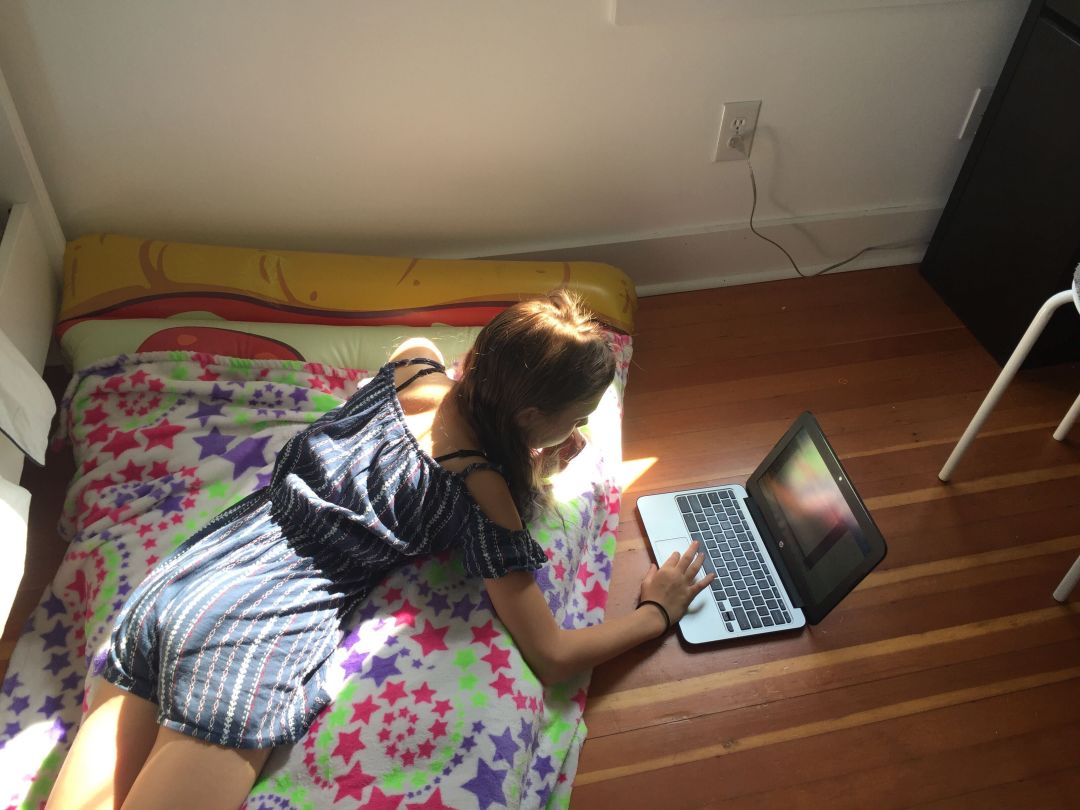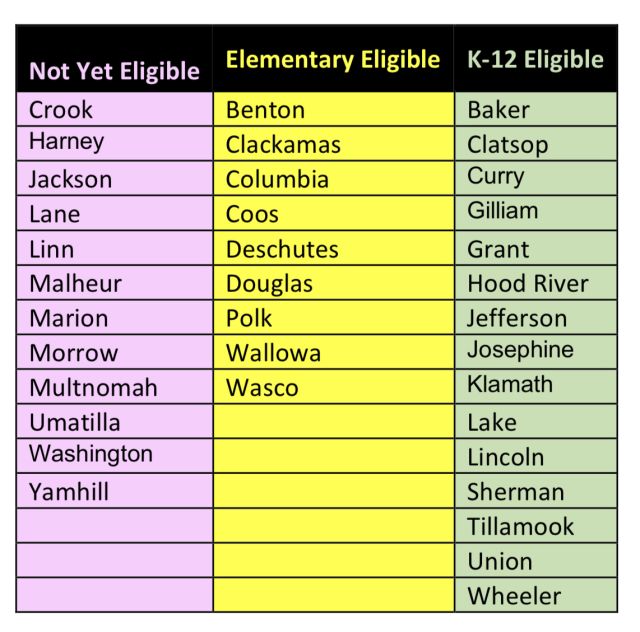More Oregon Kids Could Soon Be Heading Back to School

What school looks like for almost all of Oregon's children right now.
Image: Margaret Seiler
Students in two-thirds of Oregon’s 36 counties will soon be allowed to return to school after nearly eight months out of the classroom, under newly released guidelines issued Friday by the Oregon Department of Education.
But more than 400,000 students from the state’s most populous counties—including Multnomah and Washington, in the Portland metro area—will have to wait until localized coronavirus case counts stabilize, Gov. Kate Brown, a Democrat, announced.

“Doctors tell me that zero risk is not the way forward,” Brown said Friday. “Oregon’s cases are rising, just like the rest of the country. The second wave that we have all been worried about is here.”
The loosened guidelines—which will allow students in grades K-12 to return to school in 15 counties, while in another 9 counties, grades K-6 will be allowed back in school buildings—come as the state is seeing a spike in COVID cases. On Friday, Oregon reported more than 600 cases, the highest single day total since the start of the pandemic.
Still, Brown and education officials have been under increasing pressure to relax school opening guidelines, particularly as early and still incomplete data from around the world suggests that schools are less likely to be so-called “super-spreaders” or significant sources of new infections.
Parent groups have formed around the state, demonstrating at the Capital, writing letters to elected officials, and questioning why the state has allowed bars, restaurants, gyms and even bowling allies to open, but kept schools closed. National studies show that women have increasingly born the brunt of the pandemic, leaving the workforce to care for kids at home. Brown nodded to that in her comments Friday, noting that, “It is impossible to work from home and teach your children a full day’s worth of homework at the same time.”
On the other side, teacher and school employee unions—who are collectively among the largest donors to Brown and other Democrats—have pushed to stick with distance learning.
That’s left Oregon as one of the states in the nation with the lowest proportion of students in school—currently, fewer than 50,000 of the state’s nearly 600,000 schoolchildren have set foot in a brick-and-mortar school since mid-March.
Oregon has never seen the massive spikes in cases of COVID-19 like the one in New York in the spring, or the current outbreak in the Upper Midwest, and the state has one of the lowest overall number of deaths due to COVID in the country.
Brown hinted that schools in counties that don't yet meet the metric may yet open this school year. Early drafts of the new metrics reviewed by Portland Monthly called for a monthlong "modified lockdown" in counties that had not met the metrics by January 1, with an eye toward returning at least some students in all counties to school by February 1, 2021. But Brown steered clear of that in public remarks on Friday, saying she did not want to have to close down bars, restaurants and gyms, as has been the case throughout Europe in recent weeks.
Later, Gill told reporters that if necessary, the state is ready to "take action on a county-by-county basis. Watch for more on that."
Previously, Oregon counties had to have no more than 10 cases in a week for every 100,000 residents for three weeks in a row in order to have in-person instruction. Now that three-week period is being scrapped, in favor of a single 2-week average. Additionally, the two-week totals need to be no more than 50 per 100,000 residents, though schools could offer a blend of on-site instruction and distance learning, in counties where case rates are as high as 100 per 100,000 residents over a two-week period, or 50 per week.
Also, the statewide positivity metric–the percentage of people testing positive for COVID-19—will no longer be a factor. Now, only a county’s individual positively rate will be considered.
The new guidelines do not mean that schools will open up on Monday. There is a two-week preparation period for eligible schools, and risk mitigation strategies need to be in place, including space buffers for each student, required masks, small groups, and better ventilation in classrooms.
It’s most likely that schools will begin with some kind of “hybrid” instruction, with students taking turns coming to school and learning from home in cohorts of 20. And schools should brace themselves for the possibility of having to close down classrooms again if outbreaks do occur, education officials warned.
Schools can mitigate their risk by adhering to some basic safety standards, Gill said:
- Use face coverings or masks
- The use of personal protective equipment, which Brown said will be distributed to educators
- Frequent hand washing
- Serve students and staff in as small and as stable cohorts as possible
- Be prepared to isolate and quarantine at the first sign of illness or exposure
- Regularly clean and disinfect facilities in the environment
- Maximize airflow and ventilation




